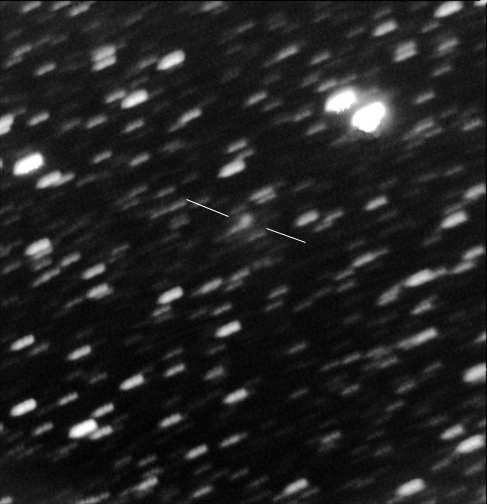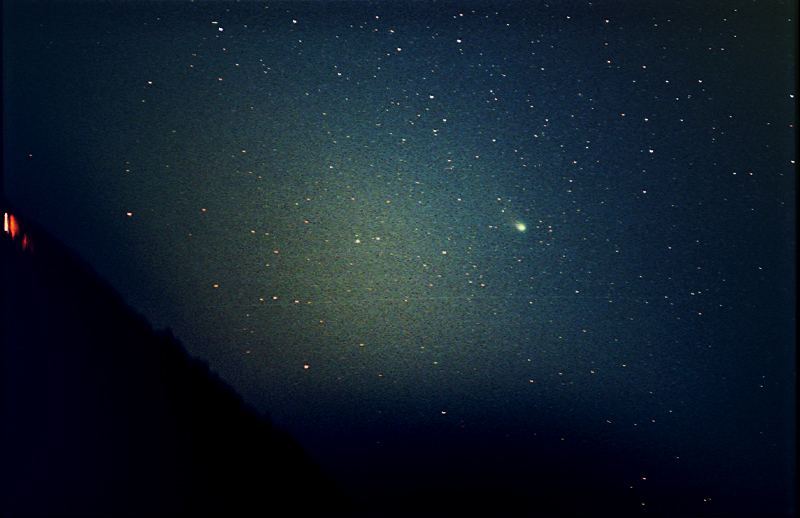
Comet NEAT 2001q4, May 5, 2004.
5 minutes exposure, Fuji Superia 200 film.
135mm f/2.5 Vivitar lens.
Comet NEAT 2001q4 was a long time reaching perihelion after discovery, nearly 3 years. However it was worth the wait. Discovered back on August 24 , 2001 as a dim 20th magnitude object in the constellation of Fornax, the comet became a very good naked eye object during April - June 2004. It was best viewed from the southern hemisphere, although northern hemisphere observers also had a good view once it started to move into the northern sky during May.
My first opportunity to view the comet came on May 5. At that time the comet was very low on the south western horizon during twilight. Even so, it was visible to the naked eye as a 3.6 magnitude object in Canis Major, about 10 degrees south east of Sirius. In the telescope the comet appeared as a well condensed object with a coma about 15 arc minutes across, and a tail about 2.5 degrees long. The coma in particular was a very strong greenish colour.
I attempted several photographs, however it was very difficult to track as I had no illuminated reticule for visual guiding. Also the declination motor on my mount was not working, which meant that the autoguider would not work. Add to this the close proximity of the comet to the horizon and the bright twilight, and it made life 'interesting'! Despite these handicaps, I did manage to get a couple of reasonable photographs. Of course, any trailing of the stars is caused by following the comet.....!! :-)

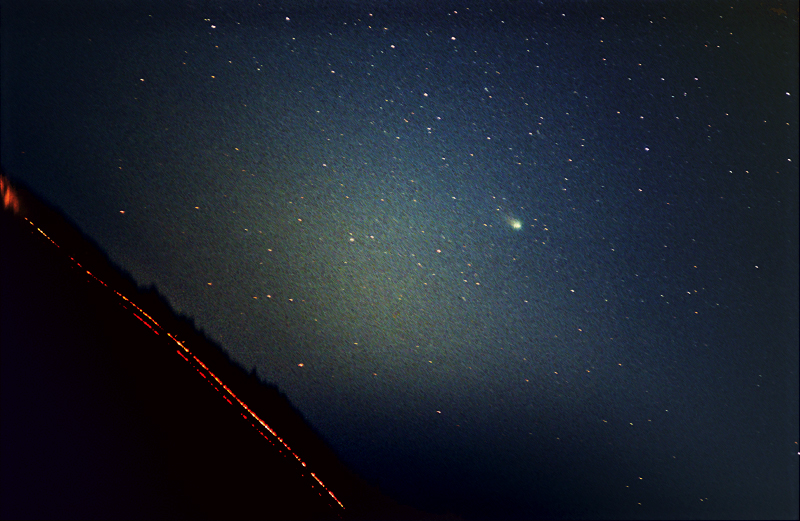
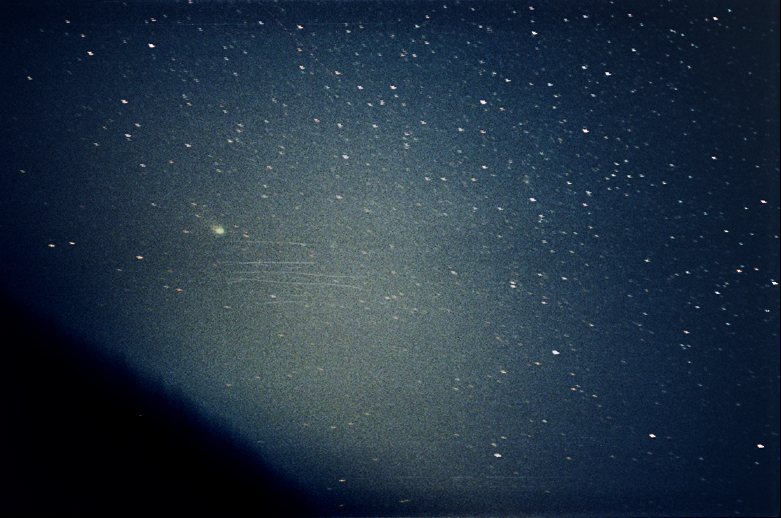
On May 16 the skies were partly clear so I decided to head out of town to a darker location and photograph the comet. My main reason for doing this was that the comet made an interesting pair with the Beehive cluster, M44. The telescopic view of the comet had changed little since the previous observation, although a little more tail was visible and the comet was easier to see naked eye as it was higher up from the horizon. I was still waiting for the declination motor from my mount to be repaired, however at least now I had a way of illuminating the guiding reticule.
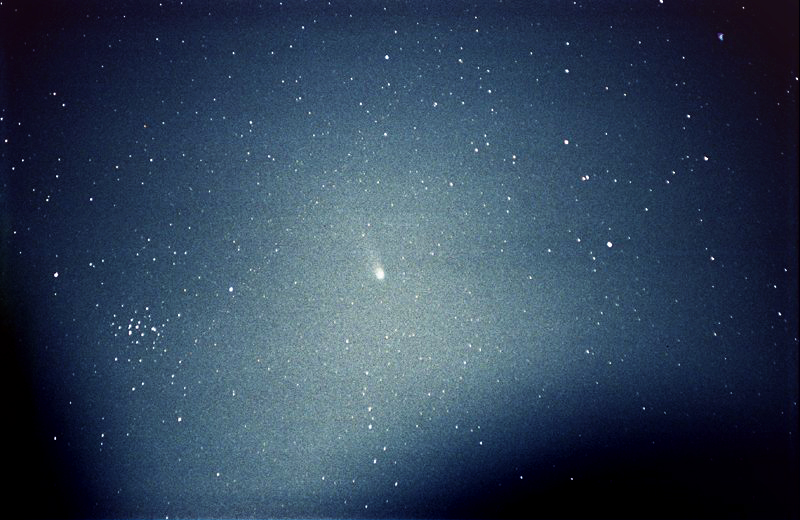
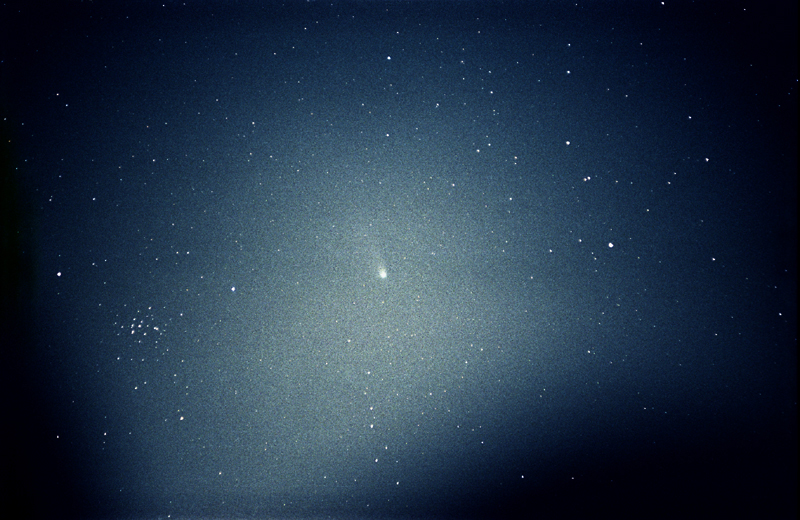
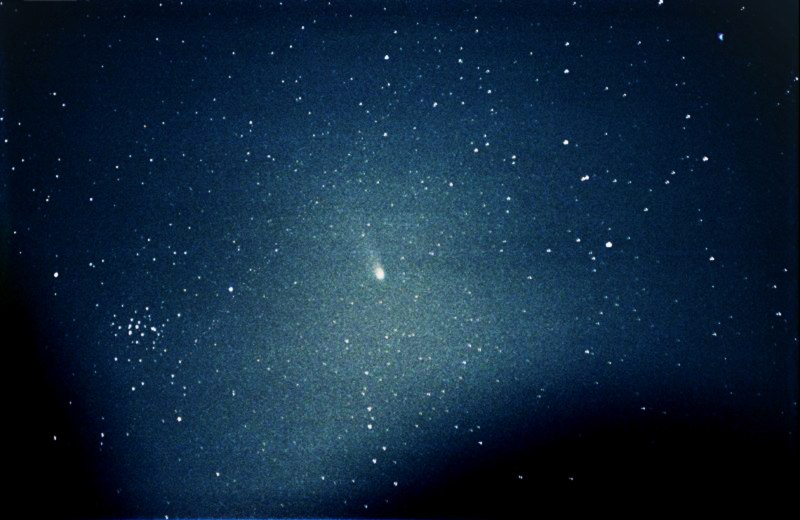
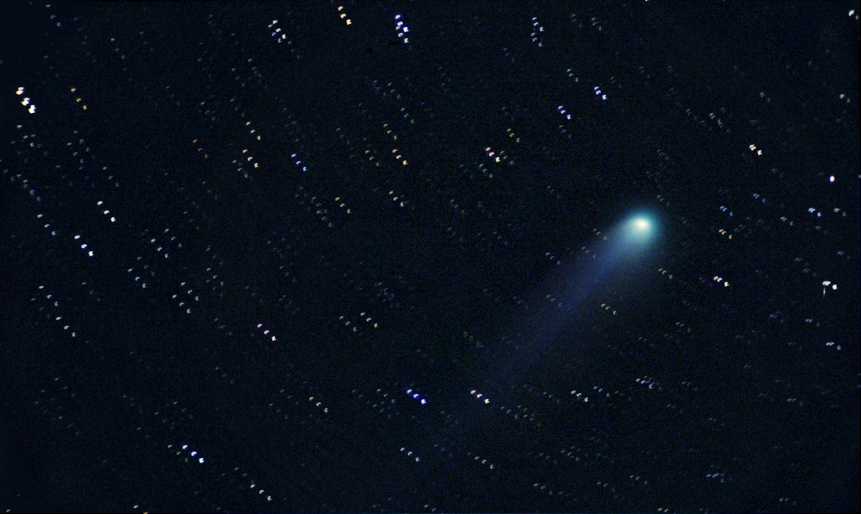
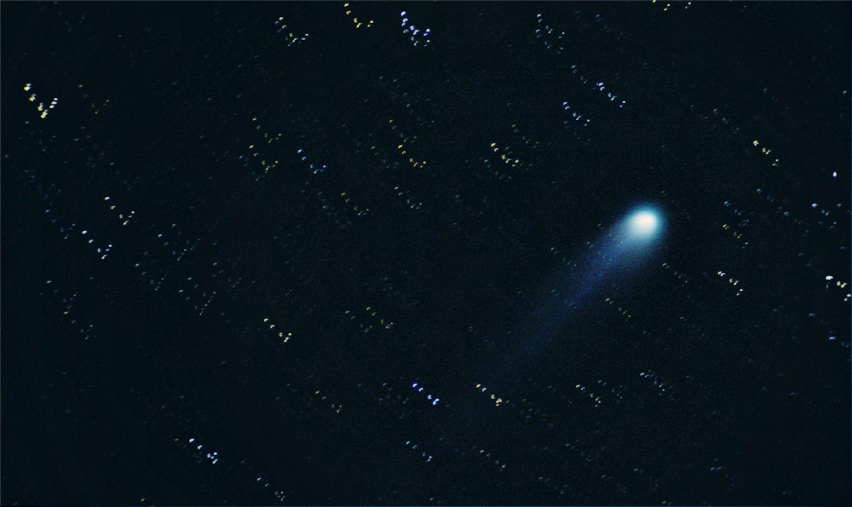
May 17 was also clear, however I was busy with asteroid observations on this night, so all I had time to do was take a number of CCD images of the comet between asteroid images.
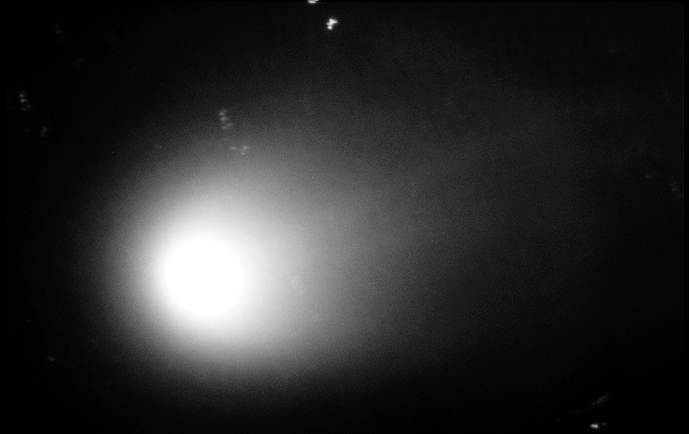
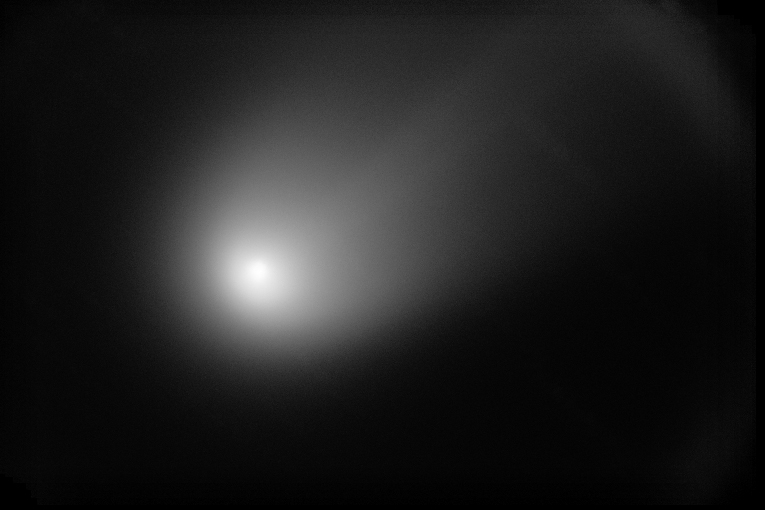
This image is a combination of 20, 1 minute images taken with an SBIG ST-7E CCD camera, combined using a median filter which removes the stars. The comet displays a parabolic coma typical of dusty comets, along with a broad dust tail and a faint, narrow ion tail.
May 19 was also clear, so I went back to observe and photograph the comet again.
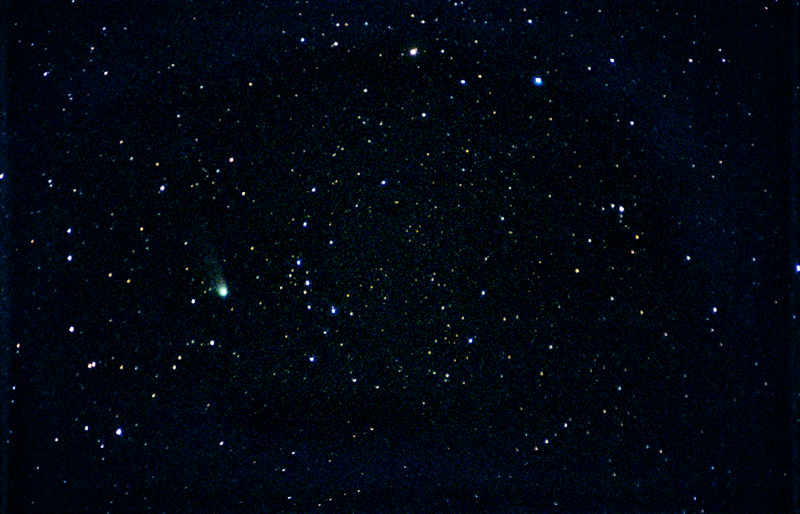
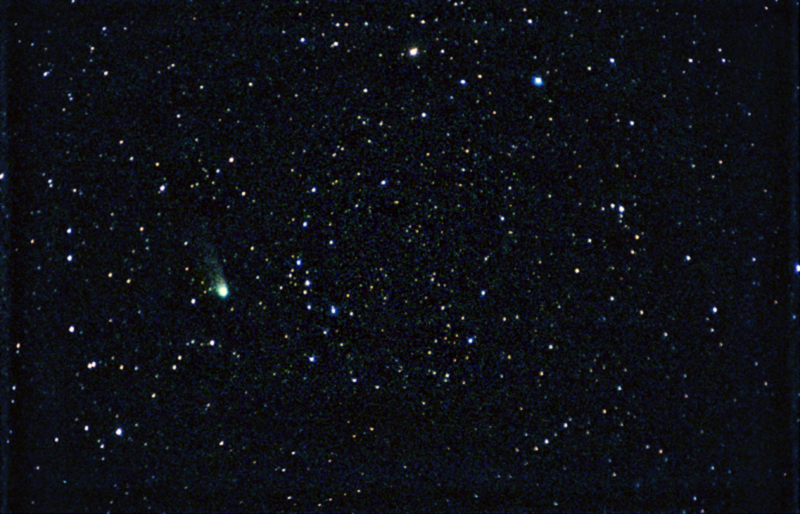
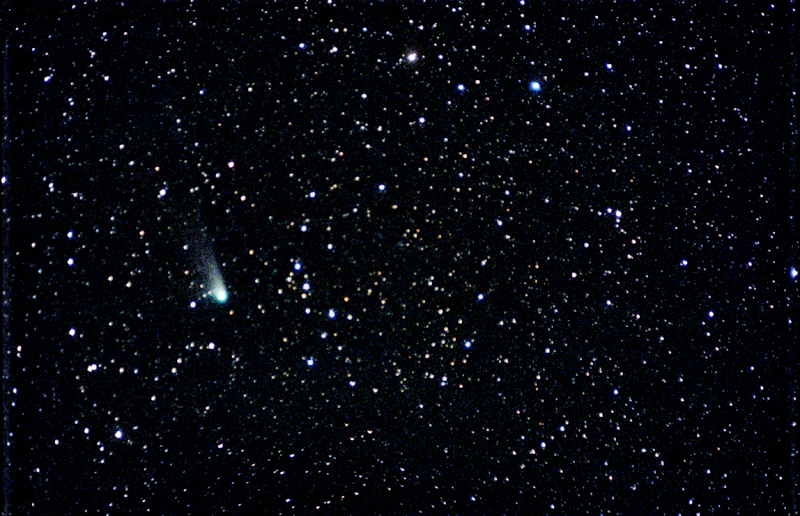
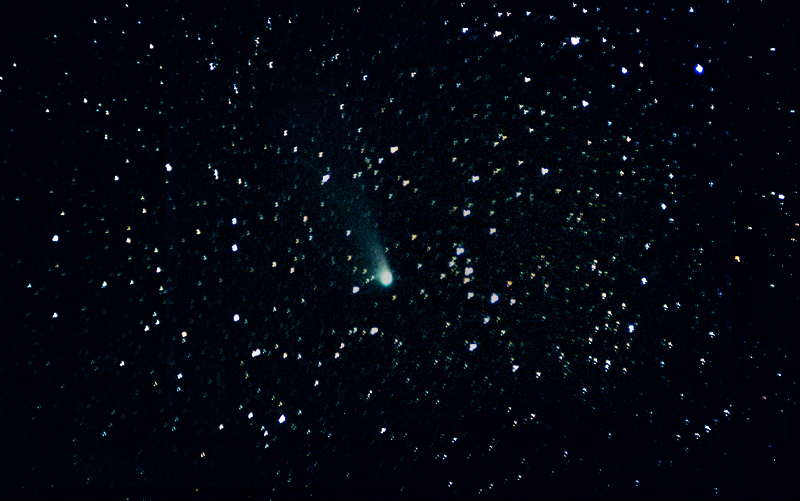
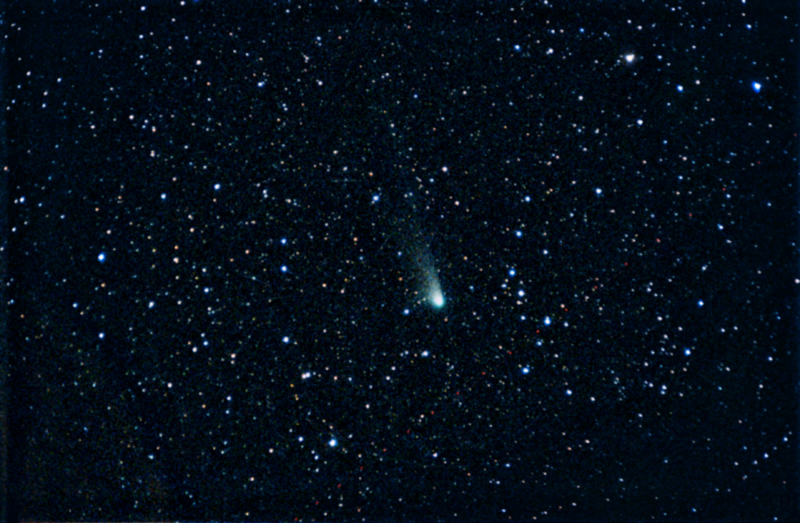
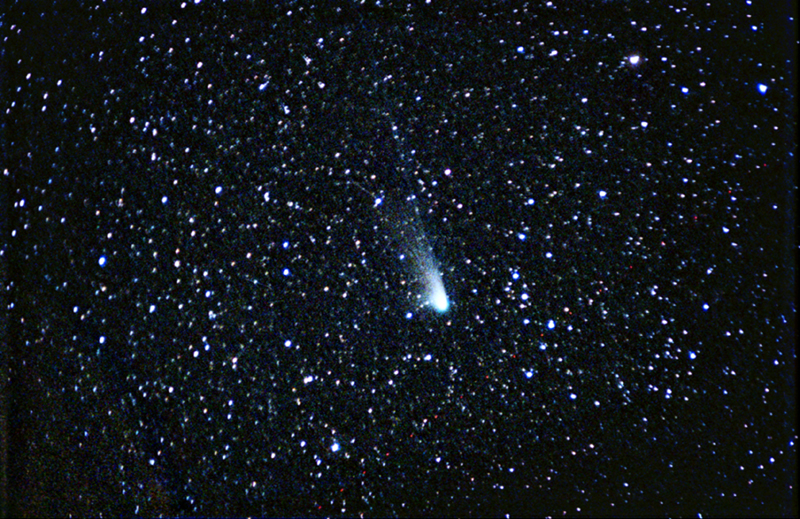
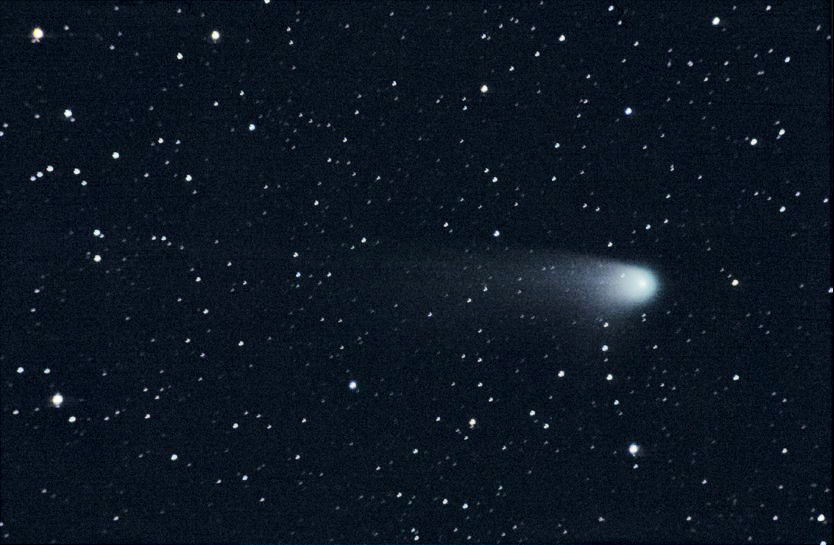
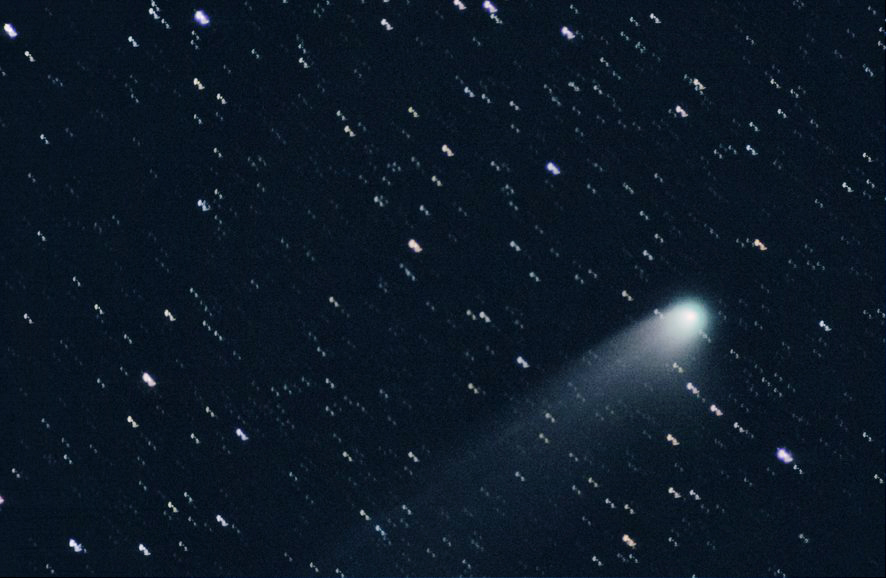
My next observation of the comet was on June 3. On this night, the comet was only just visible to the naked eye due to the full Moon that was present in the sky. Unfortunately photography was curtailed after only 5 minutes as the comet sank behind a tree. The comet had faded to around magnitude 4.3 and only a very short tail was visible in the telescope, although the bright Moon was probably the main reason for this.
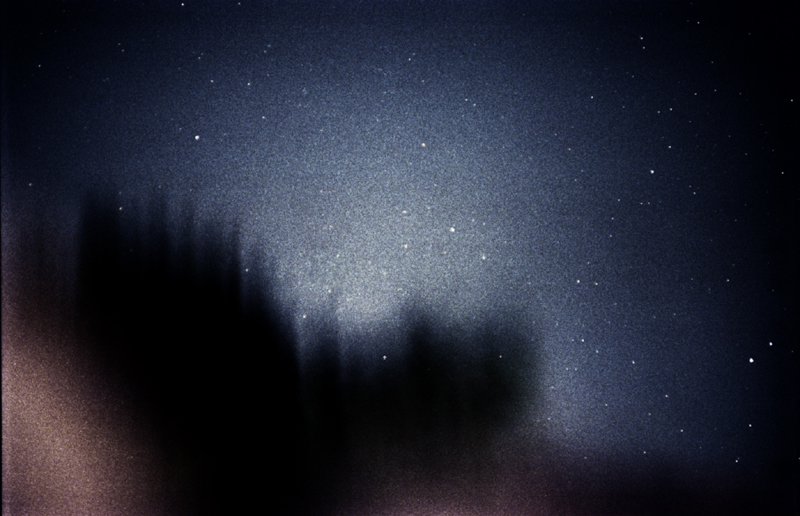
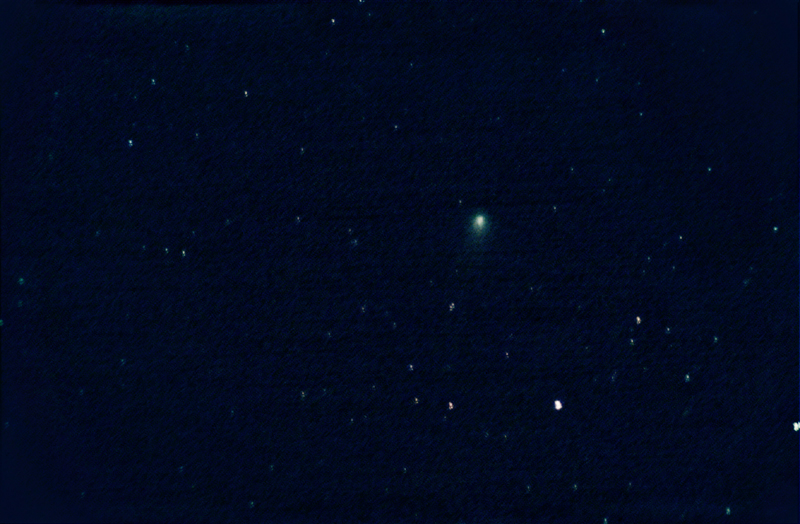
June 20 was my next opportunity to observe the comet. By now the comet had faded to around magnitude 6.3, and could not be seen with the naked eye from my location. However in the telescope, the comet still showed a bright, well condensed coma, with a short, faint tail.
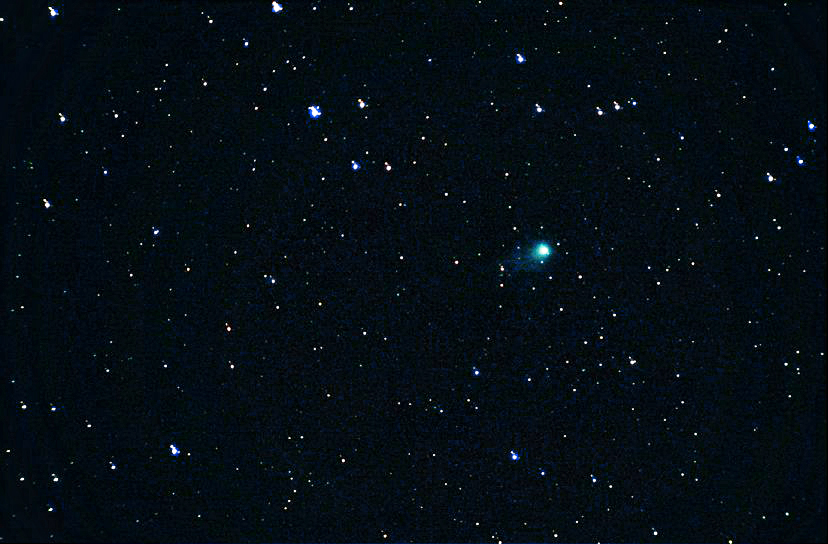
My final opportunity to observe of the comet for several months, was on June 23. The comet was now about magnitude 6.5, but otherwise unchanged from 3 nights earlier.
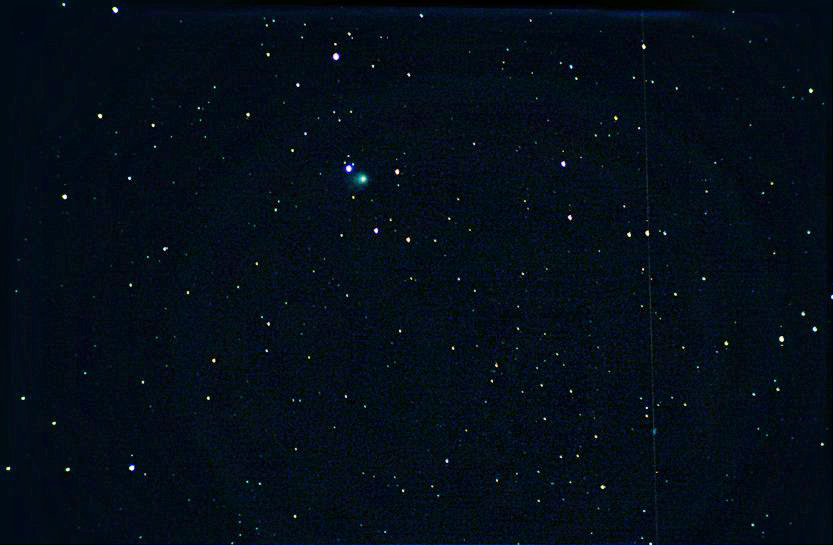
My latest observation was on January 9, 2005. The comet was aroung 14th magnitude, rather fainter than predicted. It was quite small with only a trace of coma.
